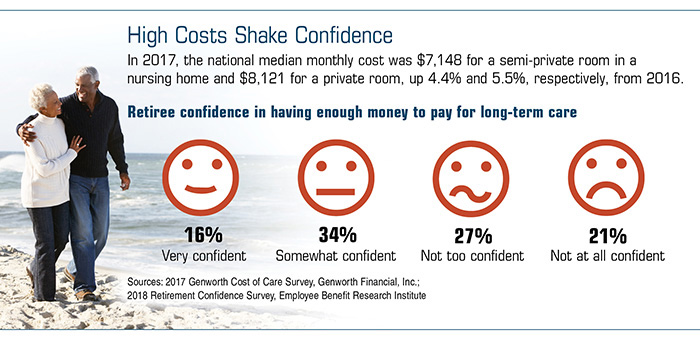10 Easy Facts About Pacific Prime Described
10 Easy Facts About Pacific Prime Described
Blog Article
All about Pacific Prime
Table of ContentsHow Pacific Prime can Save You Time, Stress, and Money.The smart Trick of Pacific Prime That Nobody is DiscussingA Biased View of Pacific PrimeNot known Factual Statements About Pacific Prime The Ultimate Guide To Pacific Prime
This is due to the fact that the information were gathered for a period of strong financial performance. Of the approximated 42 million individuals who were without insurance, all however concerning 420,000 (regarding 1 percent) were under 65 years of age, the age at which most Americans end up being qualified for Medicare; 32 million were grownups in between ages 18 and 65, about 19 percent of all adults in this age; and 10 million were children under 18 years of age, regarding 13.9 percent of all children (Mills, 2000).
These price quotes of the number of individuals without insurance are produced from the annual March Supplement to the Present Population Survey (CPS), conducted by the Demographics Bureau. Unless or else kept in mind, national estimates of individuals without medical insurance and proportions of the population with various sort of protection are based upon the CPS, one of the most extensively utilized source of price quotes of insurance policy coverage and uninsurance prices.
What Does Pacific Prime Mean?

Still, the CPS is particularly helpful because it produces yearly estimates fairly swiftly, reporting the previous year's insurance protection estimates each September, and due to the fact that it is the basis for a consistent set of quotes for greater than two decades, enabling analysis of trends in coverage in time. For these reasons, as well as the extensive usage of the CPS in various other research studies of insurance policy protection that exist in this report, we depend on CPS quotes, with restrictions noted.

The price quote of the number of uninsured individuals expands when a population's insurance condition is tracked for several years. Over a three-year period starting early in 1993, 72 million people, 29 percent of the united state populace, lacked coverage for a minimum of one month. Within a solitary year (1994 ), 53 million people experienced at the very least a month without insurance coverage (Bennefield, 1998a)
Six out of every ten without insurance adults are themselves utilized. Working does improve the chance that one and one's family participants will have insurance policy, it is not an assurance. Also participants of families with two full-time wage income earners have almost a one-in-ten possibility of being without insurance (9.1 percent uninsured price) (Hoffman and Pohl, 2000).
Pacific Prime Fundamentals Explained
New immigrants account for a significant proportion of individuals without medical insurance. One analysis has actually connected a considerable part of the recent development in the size of the U.S. uninsured population to immigrants that showed up in the country in between 1994 and 1998 (Camarota and Edwards, 2000). Current immigrants (those who concerned the United States within the previous four years) do have a high rate of being uninsured (46 percent), yet they and their youngsters account for simply 6 percent of those without insurance coverage country wide (Holahan et al., 2001).
The relationship in between medical insurance and accessibility to care is well developed, as documented later in this phase. Although the connection in between health and wellness insurance policy and health end results is neither direct nor basic, a substantial scientific and wellness services research study literature links medical insurance coverage to improved access to care, better top quality, and boosted personal and populace health condition.
Degrees of evaluation for analyzing the results of uninsurance. It concentrates especially on those without any kind of health and wellness insurance coverage for any size of time.
Some Known Incorrect Statements About Pacific Prime
The issues encountered by the underinsured are in some areas comparable to those encountered by the uninsured, although they are usually less severe. expat insurance. Uninsurance and underinsurance, nevertheless, entail noticeably different policy problems, and the strategies for addressing them may differ. Throughout go to my blog this study and the 5 reports to adhere to, the major emphasis gets on persons without any health insurance policy and hence no assistance in spending for health and wellness care past what is readily available with charity and security web organizations
Health insurance policy is a powerful element impacting receipt of care due to the fact that both individuals and medical professionals react to the out-of-pocket cost of solutions - https://telegra.ph/Pacific-Prime-Your-Trusted-Source-for-International-Health-Insurance-04-02. Medical insurance, nevertheless, is neither required neither sufficient to obtain accessibility to clinical solutions. The independent and straight impact of health and wellness insurance policy protection on access to health and wellness solutions is well developed.
Others will certainly get the healthcare they need even without health insurance, by spending for it out of pocket or seeking it from providers that provide care cost-free or at highly subsidized prices. For still others, medical insurance alone does not make sure invoice of care due to other nonfinancial barriers, such as an absence of health and wellness treatment service providers in their community, restricted access to transport, illiteracy, or linguistic and cultural differences.
5 Easy Facts About Pacific Prime Explained
Official research about uninsured populaces in the USA dates to the late 1920s and very early 1930s when the Board on the Cost of Healthcare generated a collection of records regarding funding physician office visits and hospitalizations. This problem ended up being prominent as the numbers of clinically indigent climbed throughout the Great Anxiety.
Report this page